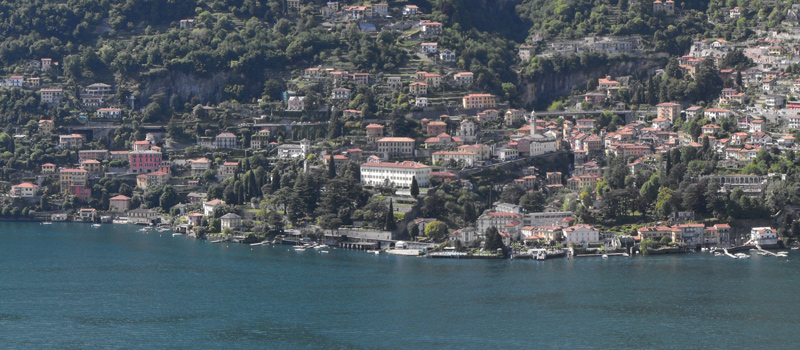
The hamlet of Rovenna is in the town of Cernobbio, the town rests on a promontory at an altitude of 415 meters, in an amazing panoramic location over Lake Como. During the Middle Ages, the small village was part of the Pieve di Zezio, an ecclesiastical partition of the 13th century, called for by Marquis Bertoldo of Hohemburg, Como’s chief magistrate at the time. For various centuries, the town of Rovenna was autonomous. In 1928, a decree of the fascist government, united Rovenna with the city of Cernobbio.
There are beautiful excursions to be taken in Rovenna, we recommend the path that climbs up to Monte Bisbino (1325 mt.), and the walk (Sentee di Sort) half way up the hill that reaches the town of Moltrasio. In downtown Rovenna we find the parish church of Saint Michele Arcangelo, the building existed during the Medieval times, and in 1670 was completely renovated in Baroque style. The church has a single nave, worth mentioning is the wooden altar engraved with the design of sculptor Giovanni Battista Barberini, and there are two other statues attributed to Barberini. The oldest relic is an 11th-century processional cross, and worth particular mention are the 5 B-scale bells, realized in 1946 by the Barigozzi company of Milan.
Rovenna is famous for its festivals which attract thousands of visitors each year. At the end of September there is a historic pumpkin festival, coinciding with the festival of the Patron Saint Michael. Two days of festivities dedicated to the pumpkin in all of its forms, with exhibitions, direct sales, typical products and plenty of fun. In October, there is the not-to-be-missed festival: Chestnuts, Witches and So On, with its roasted, cooked or glazed chestnuts, witches, puppet shows, monsters and markets. A particular commendation to the territory’s associations that organize these and other events with such dedication.

Moltrasio is situated on the western bank of Lake Como and extends from the waters of the lake to the slopes of Monte Bisbino, its sunny location and mild climate have made Moltrasio a popular holiday destination.
Moltrasio
Dried Shad (Agone), called Missoltini or Missultin, were at one time a precious food for inhabitants of Lake Como, the particular processing allowed them to be conserved for more than a year, excellent traditional Lake Como cuisine.
Lario Cuisine
Como is the city which gives the name to the entire lake, arriving by train to the Como Lago station, you can easily admire all of the marvels of the city going by foot. We recommend a visit to Brunate and Volta Temple.
Como